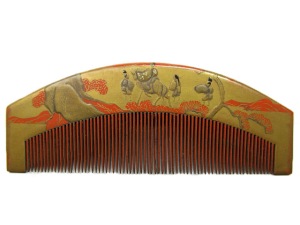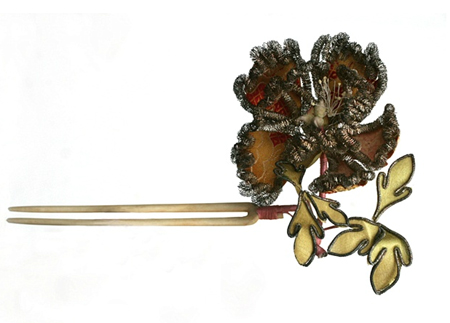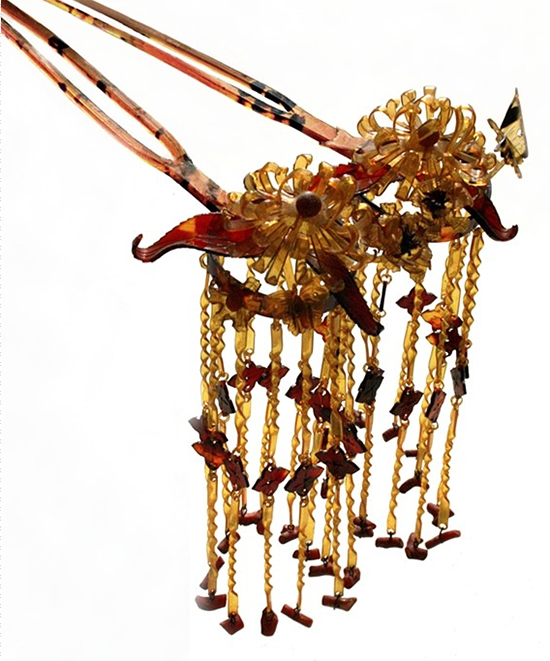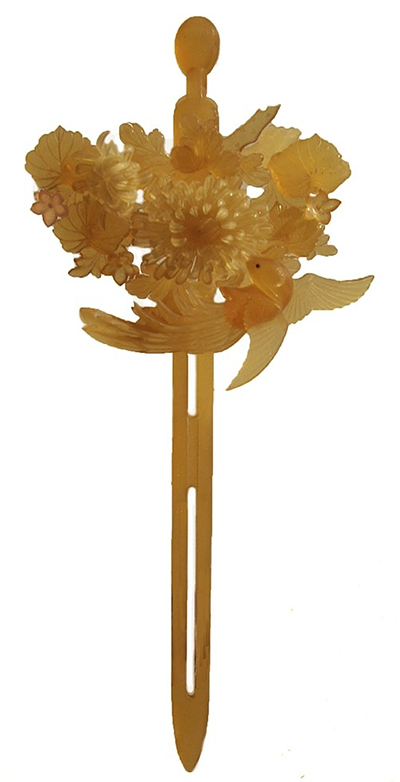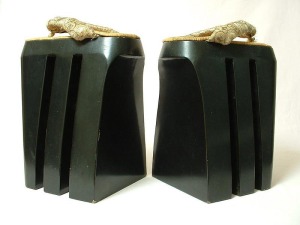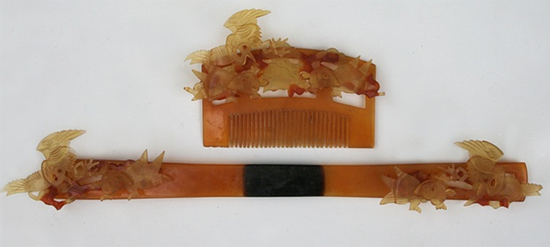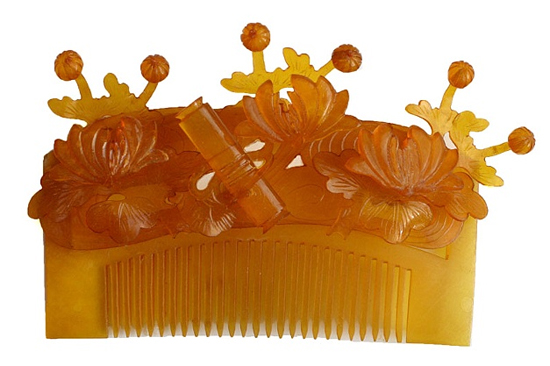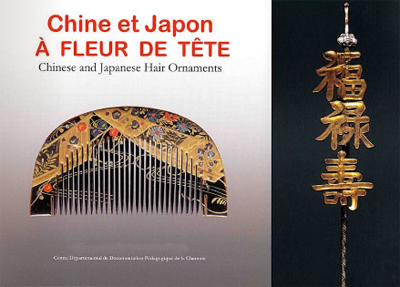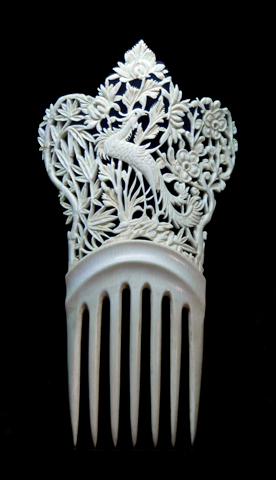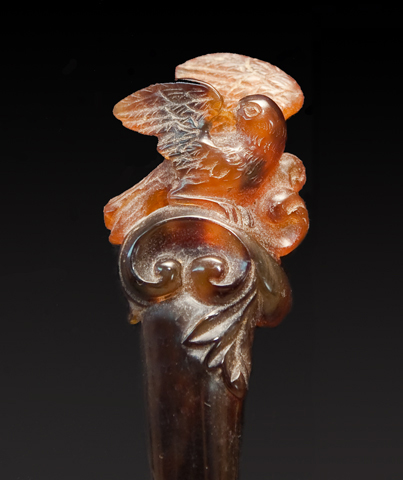By Miriam Slater:

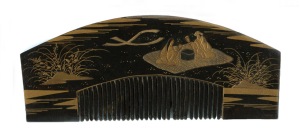
 The designs in most Japanese kanzashi most commonly are drawn from nature, such as animals ( tortoise, cranes and fish), plants (bamboo, flowers and pine trees) or landscapes (harbors, waves and mountains). Much harder to find are kanzashi in which people are depicted. The inclusion of human beings (to me at least) gives the piece a more personal touch and demands more from an artist because people are complex to render, as can be seen in the elaborate silver piece depicting a man seated on a lotus leaf. For this reason and the fact that they are so rare, hair ornaments which depict people are considered very collectable. Shown here are a few pieces from my collection except the comb depicting the man and monkey which is from the Okasaki collection.
The designs in most Japanese kanzashi most commonly are drawn from nature, such as animals ( tortoise, cranes and fish), plants (bamboo, flowers and pine trees) or landscapes (harbors, waves and mountains). Much harder to find are kanzashi in which people are depicted. The inclusion of human beings (to me at least) gives the piece a more personal touch and demands more from an artist because people are complex to render, as can be seen in the elaborate silver piece depicting a man seated on a lotus leaf. For this reason and the fact that they are so rare, hair ornaments which depict people are considered very collectable. Shown here are a few pieces from my collection except the comb depicting the man and monkey which is from the Okasaki collection.



